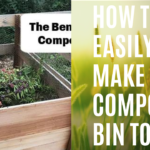Do you know that grass clippings in the garden can make it more functional? The use of grass can be very helpful and Eco-friendly. How? Check out below
Are Grass Clippings Good for Garden?
the clippings contain 4% nitrogen, 1% phosphorus and 2% potassium. Decomposed grass clippings also serve as a food source for bacteria in the soil.
As a general rule, grass clippings of an inch or less in length can be left on your lawn where they will filter down to the soil surface and decompose quickly. Remove longer clippings because they can shade or smother the grass beneath causing lawn damage.
Use clippings as garden compost or mulch instead of throwing out bagged grass clippings as yard waste.
So here are 11 ways to use grass clippings you probably never heard of that save money and time…
11. Lawn Fertilizer
Leave the clippings on your lawn and they will save up to 25% consumption of lawn fertilizers. But only leave grass clippings on the lawn if they are short, shorter clippings break down fast. Some lawn mowers are equipped with ‘mulching mode’.
use this to cut grasses into very small fragments without picking them up.
For this, you’ll need to mow regularly with a mower equipped with mulching function, this technique is not suitable for tall grasses.
10. Compost
Grass compost is another way to recycle grasses. However, you can’t make compost consisting of only grass clippings otherwise it’ll rot and stink because grass clippings consist of 80% of water
The trick is to use a good amount of other organic waste such as leaves, twigs, shredded branches, etc. with thin alternating layers of clippings in the proportion of about 1:1 or 2:1 means 2 part of the grass and 1 part of dry organic matter.
In humid weather, especially in spring and fall, it is necessary to dry grass clippings for 1 or 2 days before putting them into the compost pile. Your compost will be ready to use within 2 to 3 months.
9. for Mulch
If you’ve not applied any chemical weedkiller recently on grasses, you can use dried grass clippings for mulching in the garden.
Spread on 2-3 cm thick layer near the base of plants.
Grass clipping mulch also limits evaporation and conserves water.
If you’re using fresh clippings as mulch, only lay ¼ inches thick layer. This will allow the grass to break down quickly before it begins to smell or rot. Thicker layers made of fresh grass clippings have a tendency to remain too wet and can invite mold and create smelly decay issues.
8. in Vegetable Garden
grass clippings in the vegetable garden can make it more functional.
Nitrogen present in grass brings a big boost to vegetables, especially those which have large nitrogen needs: all the green vegetables such as lettuce, cabbage, spinach and other vegetables like cucumber, squash, zucchini, potato, and pumpkin.
If you let your grass clippings to dry out for several days, you can use them as thick mulch, for example, to protect strawberries. You can also use this thick mulch to cover the shrubs, circumference of trees and thus prevent weeds from growing at their feet.
7. Slow Release Fertilizer
Rich in nitrogen, oxygen, and phosphorus, grass clippings can be used as effective slow-release organic fertilizer in the garden.
Incorporate 2 to 3 inches mass of grass clippings 6 inches deep in garden soil. These clippings will be absorbed in garden soil and work as an additional and effective Eco-friendly source of nutrients as the grass decomposes. Take care not to mix grass clippings that contain weeds or their seeds.
6. Liquid Fertilizer
Grass clippings can be made into an effective and 100% organic liquid fertilizer just in a few days. N-P-K level of this liquid grass clipping fertilizer is around 1 – 0.5 – 3.1. To make this liquid fertilizer– fill a bucket of any size with 2/3 part of fresh grass clippings. Fill the bucket with water and close the lid. Let it steep for 3 days and your grass clipping liquid fertilizer is ready to use.
Soak the plants thoroughly using this solution. Depending on the size of the plant, apply this solution from a half cup to one quart, for plants growing in pots apply until it starts to seep out from bottom holes. To learn in detail about this grass clipping liquid fertilizer
5. Leave them on the Lawn
In case you’re making progress toward a flawless garden, you most likely expel your grass clippings each time you cut. Yet, you’re really ransacking the grass of specific supplements that it needs to flourish.
In the future, leave your short clippings to lie, as they will separate rapidly, sustaining the grass and turning it an ideal shade of green. Actually, grass clippings can add move down to 25 % of the supplements that development expels from the soil!
These clippings likewise empower useful microorganisms and nightcrawlers that process this grass and keep up sound soil.
4. Animal Feed
Grass clippings can be utilized to influence silage for steers to bolster. A few tests have discovered that silage produced using late clippings has a protein substance of 18.2%, and an edible issue substance of 68% – considerably higher than roughage, which commonly midpoints an edible issue substance of around 59%.
Notwithstanding sustaining dairy cattle, grass clippings might be a feasible supplementary sustenance hotspot for sheep.
Results from a few examinations demonstrate that grass clippings can be successfully and securely used as cheap, sustainable encourage hotspots for these wooly animals.
3. Compost
If you don’t want to leave them on the lawn, one of the easiest ways to put grass clippings to good use in your garden is by composting them. Once you prepare and treat the clippings in the right manner, you’ll be able to recycle the nutrients from the grass in other areas of your garden.
An appropriate fertilizer heap requires a blend of green and darker materials. Crisply cut grass is viewed as ‘green’, thus it should be offset by the expansion of some dark-colored material, similar to dry leaves, branches, twigs or paper.
While including crisp grass clippings, make a point to transform the grass into the heap to improve air circulation and anticipate compaction.
On the other hand, it is recommended to leave the grass clippings to dry out totally and turn darker when, obviously, they are viewed as dark-colored material!
2. Raised Beds
Raised bed planting is outstanding amongst other approaches to plant – discover why here! On the off chance that you keep up a compartment plant or raised beds, at that point, you’ll be upbeat to hear they are an extraordinary method to go through your overabundance grass clippings.
READ MORE: 9 Bedroom Plants to Help You Sleep Better at Night
To enhance soil quality and lift your yield, consider using the Lasagna Method of soil blending. It includes making a few layers of material to fill the informal lodging of your plants.
READ MORE: 9 Bedroom Plants to Help You Sleep Better at Night








1 thought on “11 Reasons why You will never Throw Away Grass Clippings after this – gardening”
Comments are closed.